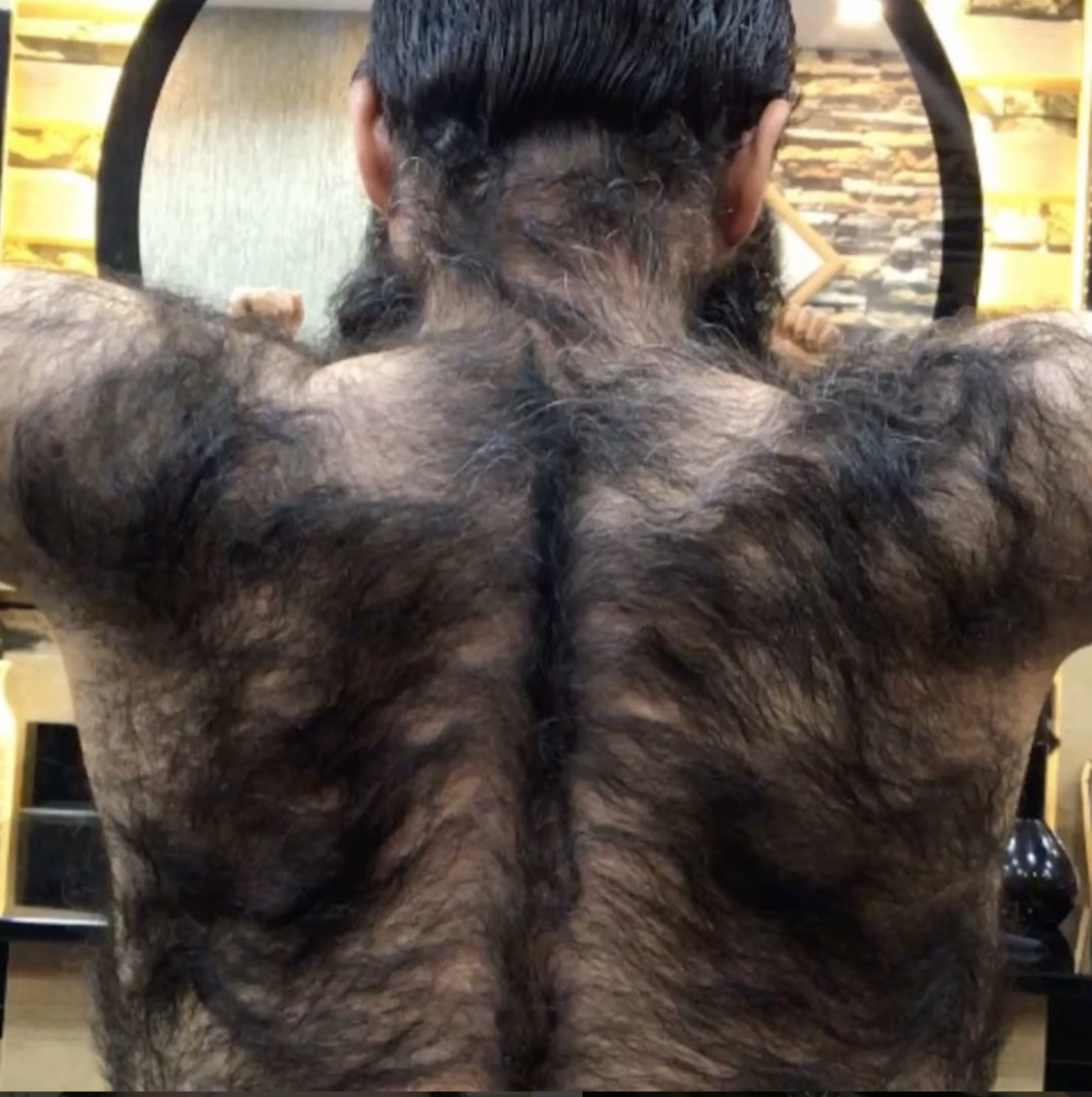Roughly a million years ago human beings lost most of their body hair, a key moment in evolution that involved major changes to the same set of genes that determined whether many of our fellow mammals kept or lost their coatings of fur, according to new research.
The study, published in the journal eLife, compared our genetic blueprints with those of 62 other mammals, including elephants, manatees and armadillos, examining how hairlessness evolved in different species at different times. The work also identified new genes and gene regulators linked to body hair, a discovery that may someday be used to treat millions of balding Americans.
The technique of comparing broad changes in the genetic codes of different mammals may also allow scientists to investigate questions with profound implications for human health: What genes developed to protect naked mole rats from cancer, and can they be manipulated in humans to treat or prevent the disease? What genetic changes have allowed bowhead whales to live for up to 200 years, far longer than any human, and can the knowledge be used to increase our life span?
ADVERTISING
“I think this is a very powerful application,” said Peter Sudmant, an assistant professor in the department of integrative biology at the University of California at Berkeley who was not involved in the study. The research method used has emerged at a moment when sequencing technology is advancing rapidly, allowing scientists to read long sequences of DNA faster and more accurately.
“I think we’re at the dawn of a very important era of medical genetics and comparative evolutionary genomics,” Sudmant said.
Hundreds of genes were likely to have been involved in the loss of most our body hair, said Nathan Clark at the University of Utah, who carried out the study with Amanda Kowalczyk at Carnegie Mellon University in Pittsburgh and Maria Chikina at the University of Pittsburgh. Using computational tools they helped develop, the authors found that although the genes for a full covering of body hair remain in our genetic code, they have been muted.
“The initial loss of hair in a lot of species was likely very adaptive,” Clark said. “When you think about it, clearly a dolphin swimming in the water, or a whale or a manatee, would be greatly slowed down. They need to be streamlined. They don’t need that hair covering anymore.”
In the case of humans, one theory holds that the loss of body hair proved advantageous for hunting in warm climates. Less hair, coupled with development of a system that allowed the body to cool off by sweating, may have been key changes that allowed humans to become better hunters, able to chase some prey to exhaustion.
Although the fossil record is insufficient to determine precisely when ancient humans lost their full body hair, Clark said, “it’s likely to have occurred when we were leaving the shaded canopy of trees and then heading out supposedly on foot across open areas … so heat dissipation probably became a pretty important thing for us, and the ability to sweat probably came at the same time.”
“That would be my guess,” Clark said, clarifying that, “this paper doesn’t prove that.”
What the new study does show is the insight that can be gained by taking a multispecies view of evolution. Attempting to pinpoint specific genes that shut off in one animal that lost its body hair would be, as Clark put it, “a needle-in-a-haystack problem.”
However, finding genetic changes common to many animals that lost hair is far more manageable. Scientists can line up the genetic blueprints of each animal and note areas that have changed rapidly in some species while remaining constant in others. The approach capitalizes on an underappreciated fact of evolution: Despite very different appearances and behaviors, humans share much of their DNA with other mammals: 99 percent with chimpanzees, 85 percent with mice and 80 percent with cows.
For example, a warmer climate that reduced vegetation in the tundra is thought to have contributed to the extinction of woolly mammoths about 10,000 years ago.
“If the more woolly ones that couldn’t sweat well were dying off because they were overheating trying to chase some food source, then yes it would be a big disadvantage,” Clark said.
If there was a clear advantage, the loss of body hair might have occurred over hundreds of generations, taking thousands of years, Clark said. If there was no advantage but body hair was simply no longer important, then it would probably have taken thousands of generations or more.
The technique used in the paper also sheds light on the less-understood areas of our genetic blueprint. While about 20,000 genes carry the instructions for making proteins, they account for only about 2 percent of the genome. Other areas function much like a dimmer switch on a light, affecting the degree to which genes or groups of genes are turned up or down. Turning up a gene almost always causes more of a specific protein to be made.
“Not nearly as much work has been done on those regions,” said Mark Springer, a professor emeritus in evolution, ecology and organismal biology at the University of California at Riverside. This paper “really points the way forward for future research. There’s much more to be learned.”
In 2017 Clark and some of his colleagues used a similar technique to compare the genomic evolution of animals that live above ground with blind mammals that live below ground. They found many vision- and skin-related genes that changed at a faster rate in animals living underground. They also identified genes and regulatory regions that could be used as potential targets for treatment of congenital eye diseases.
“I have to say this kind of stuff is incredibly cool,” Sudmant said. “We’re looking at 75 million years of evolution. The fact that you can look at the molecular pathways that are influencing a trait like body hair is mind-blowing.”
The study, published in the journal eLife, compared our genetic blueprints with those of 62 other mammals, including elephants, manatees and armadillos, examining how hairlessness evolved in different species at different times. The work also identified new genes and gene regulators linked to body hair, a discovery that may someday be used to treat millions of balding Americans.
The technique of comparing broad changes in the genetic codes of different mammals may also allow scientists to investigate questions with profound implications for human health: What genes developed to protect naked mole rats from cancer, and can they be manipulated in humans to treat or prevent the disease? What genetic changes have allowed bowhead whales to live for up to 200 years, far longer than any human, and can the knowledge be used to increase our life span?
ADVERTISING
“I think this is a very powerful application,” said Peter Sudmant, an assistant professor in the department of integrative biology at the University of California at Berkeley who was not involved in the study. The research method used has emerged at a moment when sequencing technology is advancing rapidly, allowing scientists to read long sequences of DNA faster and more accurately.
“I think we’re at the dawn of a very important era of medical genetics and comparative evolutionary genomics,” Sudmant said.
Hundreds of genes were likely to have been involved in the loss of most our body hair, said Nathan Clark at the University of Utah, who carried out the study with Amanda Kowalczyk at Carnegie Mellon University in Pittsburgh and Maria Chikina at the University of Pittsburgh. Using computational tools they helped develop, the authors found that although the genes for a full covering of body hair remain in our genetic code, they have been muted.
“The initial loss of hair in a lot of species was likely very adaptive,” Clark said. “When you think about it, clearly a dolphin swimming in the water, or a whale or a manatee, would be greatly slowed down. They need to be streamlined. They don’t need that hair covering anymore.”
In the case of humans, one theory holds that the loss of body hair proved advantageous for hunting in warm climates. Less hair, coupled with development of a system that allowed the body to cool off by sweating, may have been key changes that allowed humans to become better hunters, able to chase some prey to exhaustion.
Although the fossil record is insufficient to determine precisely when ancient humans lost their full body hair, Clark said, “it’s likely to have occurred when we were leaving the shaded canopy of trees and then heading out supposedly on foot across open areas … so heat dissipation probably became a pretty important thing for us, and the ability to sweat probably came at the same time.”
“That would be my guess,” Clark said, clarifying that, “this paper doesn’t prove that.”
What the new study does show is the insight that can be gained by taking a multispecies view of evolution. Attempting to pinpoint specific genes that shut off in one animal that lost its body hair would be, as Clark put it, “a needle-in-a-haystack problem.”
However, finding genetic changes common to many animals that lost hair is far more manageable. Scientists can line up the genetic blueprints of each animal and note areas that have changed rapidly in some species while remaining constant in others. The approach capitalizes on an underappreciated fact of evolution: Despite very different appearances and behaviors, humans share much of their DNA with other mammals: 99 percent with chimpanzees, 85 percent with mice and 80 percent with cows.
For example, a warmer climate that reduced vegetation in the tundra is thought to have contributed to the extinction of woolly mammoths about 10,000 years ago.
“If the more woolly ones that couldn’t sweat well were dying off because they were overheating trying to chase some food source, then yes it would be a big disadvantage,” Clark said.
If there was a clear advantage, the loss of body hair might have occurred over hundreds of generations, taking thousands of years, Clark said. If there was no advantage but body hair was simply no longer important, then it would probably have taken thousands of generations or more.
The technique used in the paper also sheds light on the less-understood areas of our genetic blueprint. While about 20,000 genes carry the instructions for making proteins, they account for only about 2 percent of the genome. Other areas function much like a dimmer switch on a light, affecting the degree to which genes or groups of genes are turned up or down. Turning up a gene almost always causes more of a specific protein to be made.
“Not nearly as much work has been done on those regions,” said Mark Springer, a professor emeritus in evolution, ecology and organismal biology at the University of California at Riverside. This paper “really points the way forward for future research. There’s much more to be learned.”
In 2017 Clark and some of his colleagues used a similar technique to compare the genomic evolution of animals that live above ground with blind mammals that live below ground. They found many vision- and skin-related genes that changed at a faster rate in animals living underground. They also identified genes and regulatory regions that could be used as potential targets for treatment of congenital eye diseases.
“I have to say this kind of stuff is incredibly cool,” Sudmant said. “We’re looking at 75 million years of evolution. The fact that you can look at the molecular pathways that are influencing a trait like body hair is mind-blowing.”





